Home Loans
We care, to ensure you get the best loan.
We believe that everyone’s property dreams
deserve the best possible start!
Buying a new home?
Self-employed home loans
Buying an investment Property?
SMSF Loans
Make the right mortgage decision
When you need a home loan, AAP Finance Brokers are here to ensure you’re armed with the right information to help you make the right decisions.
We understand that your unique circumstance will impact the type of home loan options available to you and which mortgage will suit you best. There are literally thousands of mortgage property loans available, with new products emerging all the time. In fact, we offer over 2,000 products from over 60 Lenders across Australia.
You can have a free mortgage consult with one of our professional finance mortgage brokers, we are happy to come to you, online or phone. Whatever works best for you.
Is it time to Refinance?
It’s worth reviewing your existing loan. We can do a free lender comparison to ensure you are getting the best deal, potentially saving you money in the process.
We’ve used AAP for a last few deals and they’ve been great, home loan, commercial loan, and a refinance.
Highly recommend.
Thank you so very much Tony.
I recently purchased a home and had the absolute pleasure of working with Lisa from App Finance Brokers. From the very beginning, Lisa was incredibly helpful—not just with the finance side, but even during the house-hunting process. She went above and beyond, always available to answer my questions and provide guidance, even after hours in the evenings. Her responsiveness, professionalism, and genuine support made what can be a stressful process feel smooth and manageable. I couldn’t have asked for a better experience.
Thank you, Lisa
you’ve been amazing!
At the core of our experience with Tony was an unwavering sense of clarity and support. From the very first conversation, he brought not just expertise, but genuine understanding. Tony helped us make sense of the process, addressed our concerns with patience and honesty, and gave us the confidence to finally take the leap.
Thanks to Tony's guidance, we secured a fantastic refinance and finally began the renovation project we had only talked about for years.
Thank you Tony & Team
Then there's Anthony. He's not just good; he's genuinely phenomenal. Working with him has been an absolute revelation. Honestly, whatever curveball gets thrown our way – and in the world of mortgages, you know there are plenty – Anthony just handles it. His experience and deep knowledge aren't just words on a CV; they're the tools he expertly uses to navigate the most complex situations with what seems like effortless skill.
Seriously, in both my professional and personal dealings, I can say without a shadow of a doubt that Anthony is the best advisor I've ever encountered. And the fact that he'll still pick up the phone and put in serious work for us, even while he's supposed to be on vacation? That's not just going the extra mile; that's a whole new level of 'customer first.' It speaks volumes about his dedication.
So, if you're looking for a mortgage, do yourself a massive favour and talk to Anthony. He's not just a recommendation; he's the benchmark. Trust me on this – you won't find better.
Tony is so friendly, efficient and really knows his stuff. Thankyou Tony and team we would recommend to to anyone.
Thanks Steve!
Thanks Tony!
Tony assisted us with refinancing our loans which were a mix of both personal, business and commercial lending. Tony's help with navigating the complexities of these loans was invaluable and his tenacity in achieving a great outcome for us quite remarkable. I have also really enjoyed our time working together as he is just a great guy to deal with. I would highly recommend AAP to anyone; I cannot speak highly enough.
Thank you, Tony and team!
I can't say enough good things about our experience with Tony at AAP Finance Brokers. As first-time homebuyers, we were a bit overwhelmed, but Tony made the entire mortgage process smooth and stress-free. From the very beginning, he was incredibly knowledgeable, patient, and easy to work with.
Tony took the time to explain everything in detail, answering all our questions and guiding us through each step. We really felt supported throughout the entire journey. Thanks to Tony, we are now proud homeowners!
If you're looking for a mortgage broker who genuinely cares about their clients, look no further. Highly recommend!
This was my first time using a finance broker and my experience with Steve has restored my faith in the finace sector.
He was very professional , knowledgeable and helpful, explaining my best options to make my vision a success.
I strongly recommend using Steve at AAP Finance Brokers Illawarra.
My wife loved Tony's thoughts of why reduce the mortgage when you have been successful so far - Borrow more I say -
Thanks Tony
Cheers Ian and Melissa
Thanks for everything
Chris and Steve
After starting the process to initially refinance and pull out equity with our existing lender back in feb, our business banker kept changing the goal posts. Frustrated I emailed Steve. He called me that afternoon and discussed our needs. Before we knew it the application had been submitted and approved with another lender. A very happy customer and highly recommend as a broker!
He was professional, knowledgable and eager to see me achieve my goals.
Drawing on his years of experience he was able to secure a loan that was well suited to the objectives we discussed.
Glen was easily contactable and kept me updated throughout the entire process, from application until settlement.
I would highly recommend Glen and the team at AAP Finance Brokers to anyone.
I look forward to working with him in the future.
Many thanks Glen!!!
His unique skill set and knowledge from working over 30 years in banking and finance helped clarify any questions or queries that we had.
I highly recommend Glen for anyone looking for a home loan broker that is informative, responsive and approachable. 5 stars all the way!
From the outset Glen was professional and prompt in his responses and follow ups. Our loan criteria wasn’t exactly straight forward but he made it so easy for us.
When we found a property we liked we ran into some delays from a preferred lender, but Glen had plan B ready to go and got just as good a deal over the line in a couple of days with a new lender.
Will use again and will recommend to friends and family!
If you're seeking a reliable and skilled mortgage broker, Steven is undoubtedly the one to trust .
Thank you Mitch for helping us purchase our first home.
Mitch responses quickly, is reliable, knowledgeable & was able to point us in the right direction in many different ways for buying our first home.
We could not have purchased our home with without his expertise.
Mitch is also a really nice man.
Thank you Mitch, I would highly recommend him to anyone.
5 stars! ⭐️
Thank you
Keahana & Brandon
Steve demonstrated unparalleled professionalism and expertise throughout the entire journey. He took the time to understand our financial goals, preferences, and unique circumstances. With his extensive knowledge of the market and loan options, he presented us with a range of suitable choices tailored to our specific needs.
Thanks to Steve’s expertise, we successfully secured our second home loan, and we couldn't be happier with the outcome. He truly exceeded our expectations in every aspect of their service. We are grateful for his unwavering support, professionalism, and integrity.
Thank you once again for everything you have done for us!
Being self-employed always proves to be a challenge however AAP went above and beyond to ensure my needs were met.
They are a standout choice for anyone seeking a mortgage. I wholeheartedly recommend them to anyone looking to navigate the complexities of finding the right mortgage with confidence and peace of mind.
Thank you AAP
He has even had success getting SMSF loans approved or refinanced when others have avoided them in the past.
I always recommend my clients talk to Steve when thonking about applying for a loan.
Ian and Danni, Bellambi NSW
He has a lot of banks in his arsenal to chose from which he will find the best deal for your circumstances. Not only a good broker he is a good upfront bloke. I highly recommend you give him a go.
Happy to recommend Steve ( and have already done so on several occasions) and look forward to having Steve continue to help us . Jenny and Theo
Thank you again 😊
Natalie
Great personal service 😀
Not only was a great competitive rate achieved, the service was friendly and professional.
Building is a stressful process with lots of ups, downs and curve balls thrown in along the way, having Glen look after the financing of our build in such a personalised way (he was only ever a phone call of email away) removed any stress about this element of our project.
We could not recommend Glen any more highly.
60+ Lenders
200 years of shared Banking & Finance experience
2,000+ Products to choose from
Help yourself to our online calculators that can be useful in planning your finance.
Have you run the numbers?








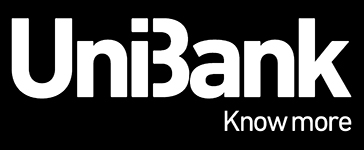









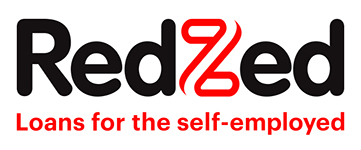














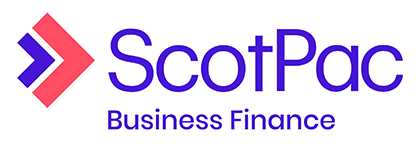



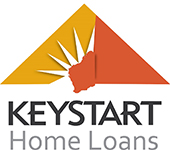

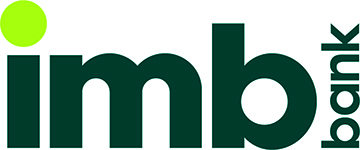









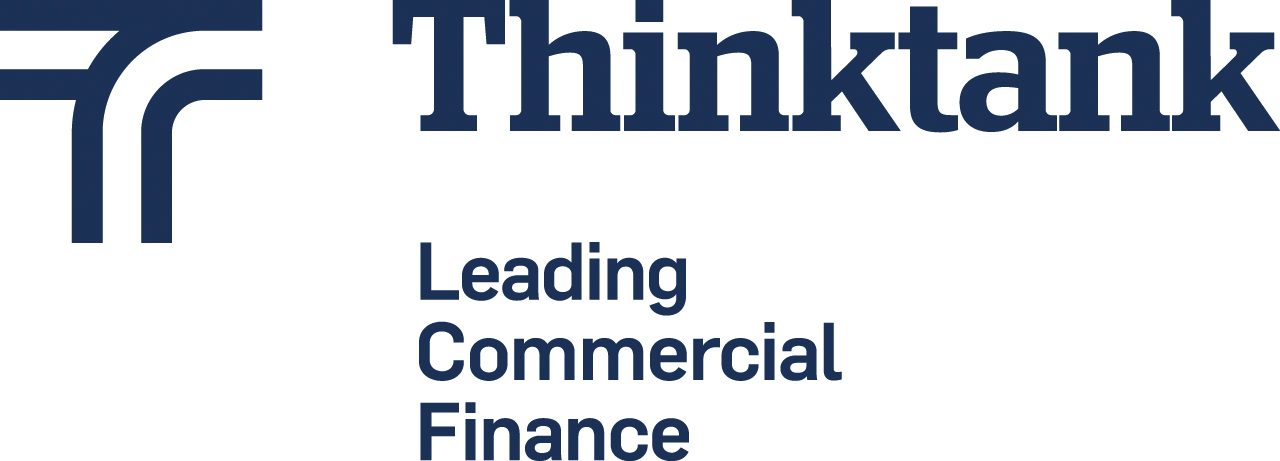
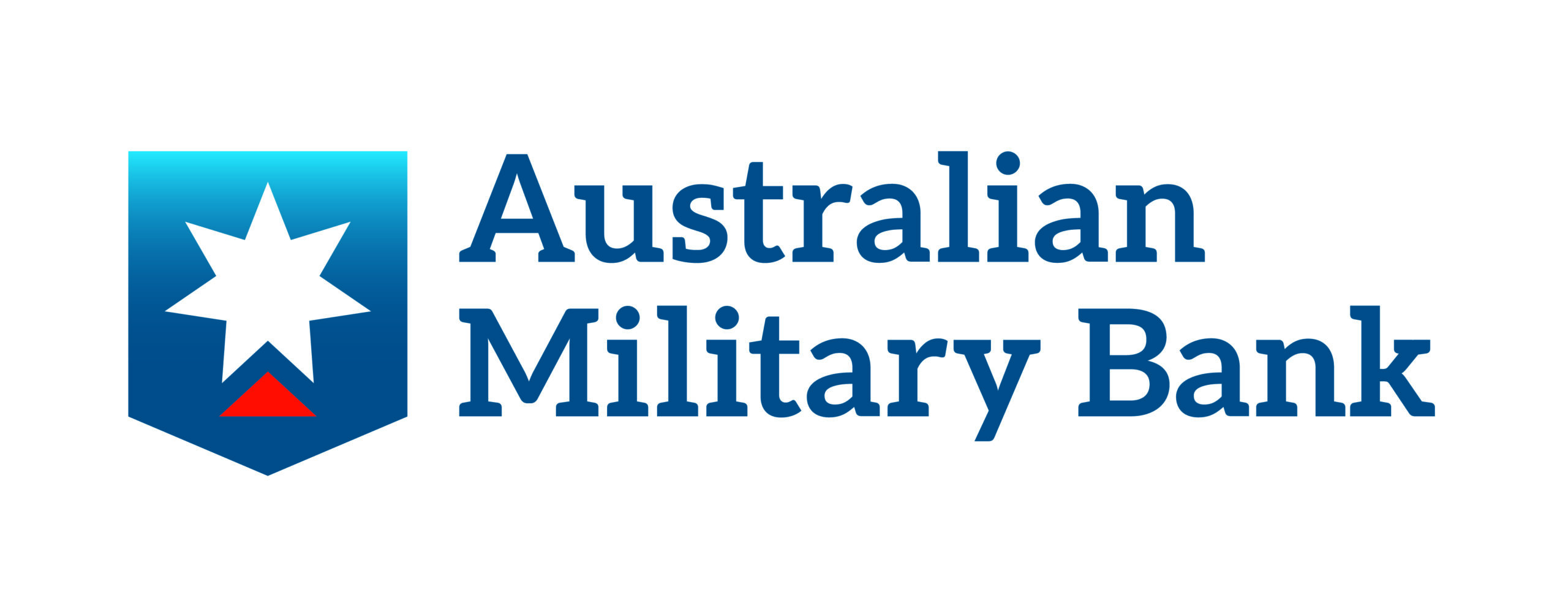
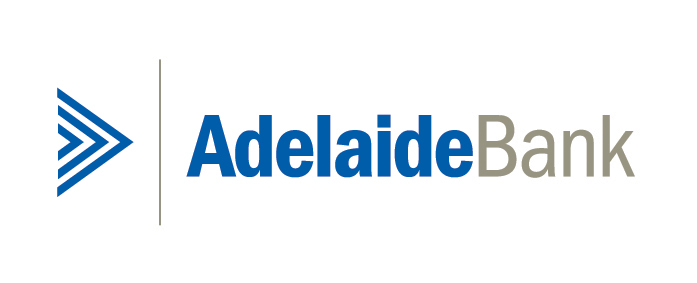




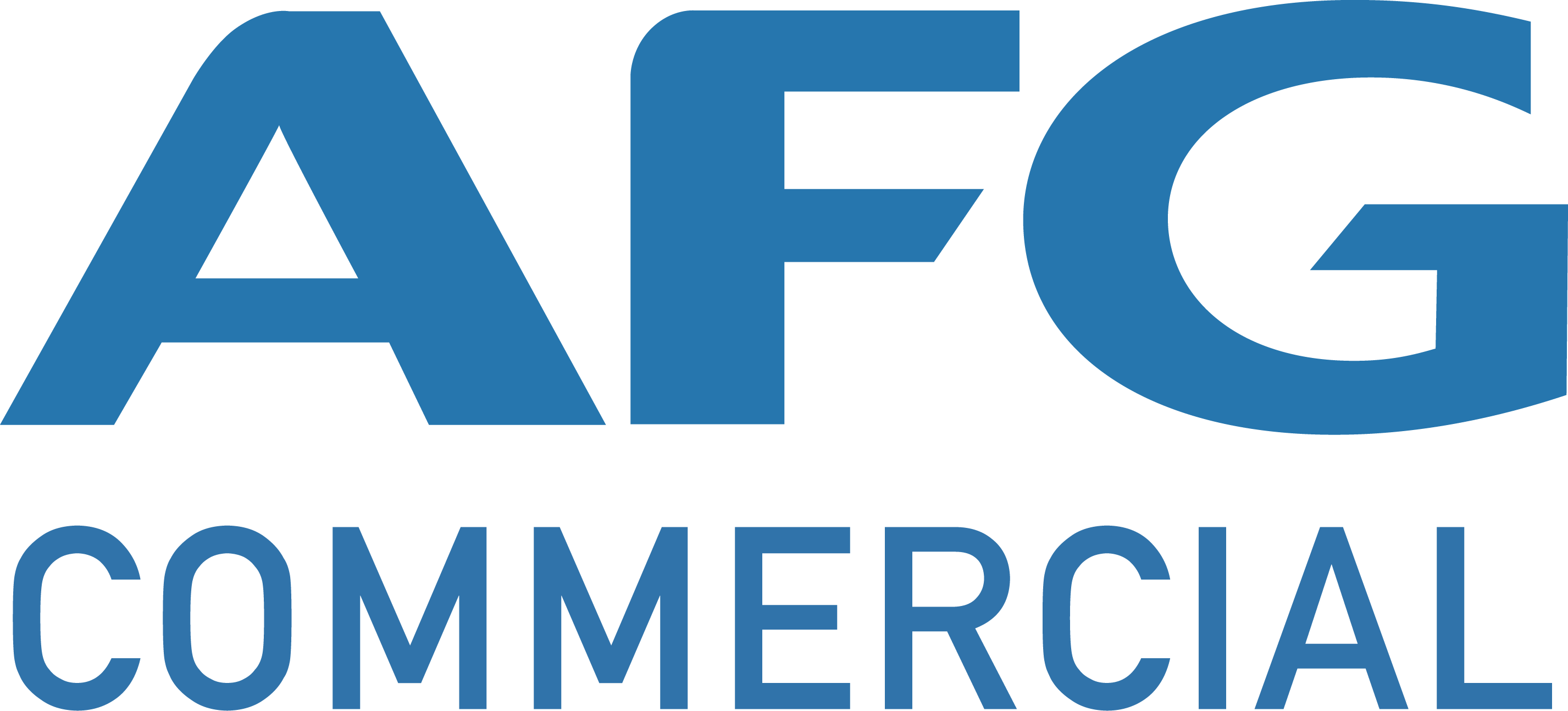

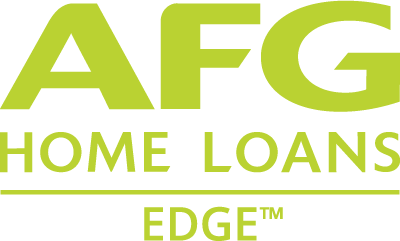
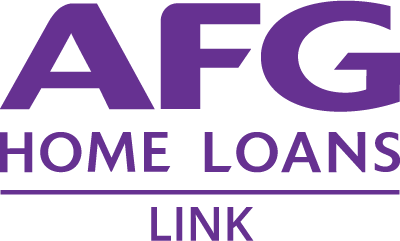





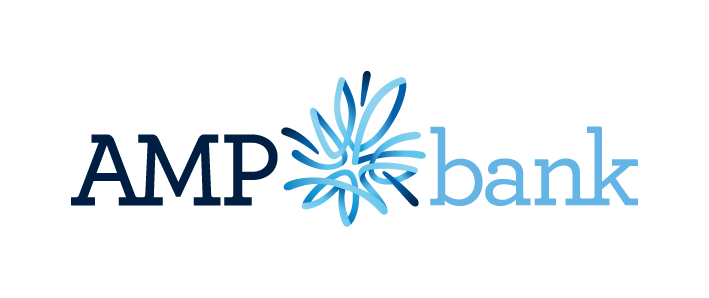
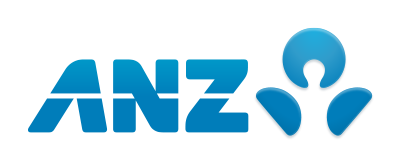


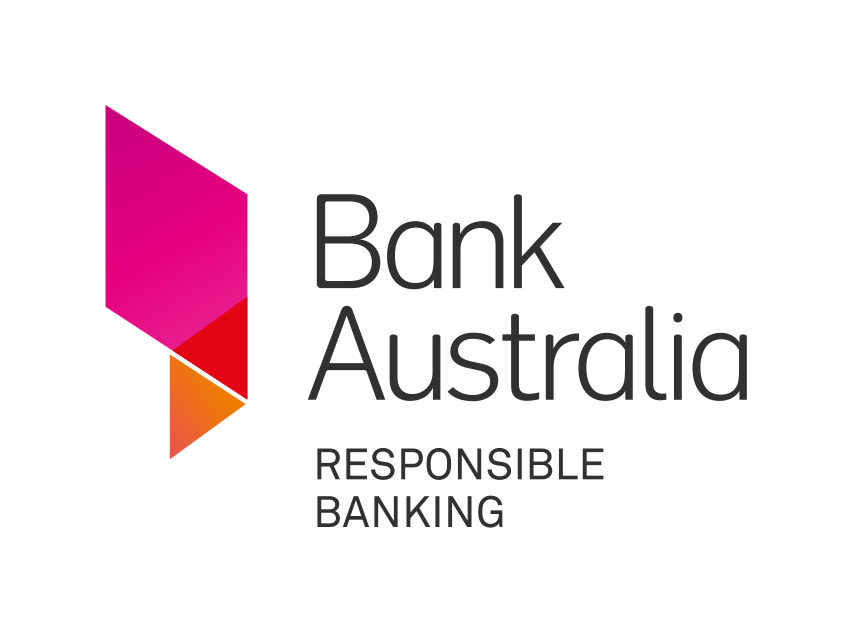





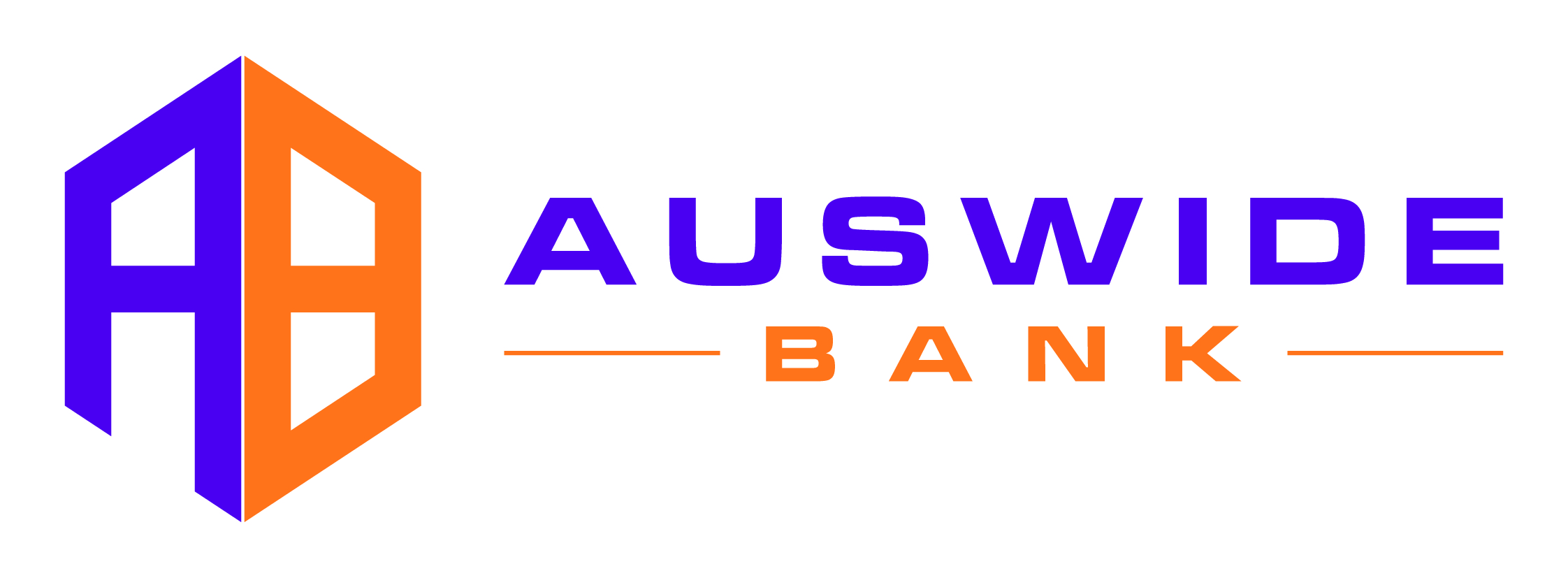






Our team are located across NSW currently including Sydney,
Central Coast NSW, Sutherland Shire, Northwest Sydney, Wollongong, Illawarra region, Bathurst, and Tamworth. Our services are accessible across Australia.
Find a mortgage broker near you
Frequently Asked Questions about Home Loans
Home Loan Products
VARIABLE RATE:
Standard and Basic variable loans are the most popular home loan in Australia. Interest rates go up or down over the life off the loan depending on the official rate set by the Reserve Bank of Australia and funding costs. Your regular repayments pay off both the interest and some of the principal.
Here we give you an overview of the different types of variable rates, features and benefits in the current market:
- Repayment Options
- Principal & Interest
Repayments are calculated on the total term of the loan and the fixed interest rate that you select.
Repayment options
Weekly or fortnightly repayments
Instead of a regular monthly repayment, you pay off your home loan weekly or fortnightly.
This can suit people who are paid on a weekly or fortnightly basis, and will save you money because you end up making more payments in a year, cutting the life of the loan.
Repayment holiday
You can take a complete break from repayments, or make reduced repayments, for an agreed period of time.
This can be useful for travel, maternity leave or a career change.
Interest only repayments
You only pay the interest on the loan, not the principal, usually for the first one to five years although some lenders offer longer terms.
Many lenders give borrowers the option of a further interest-only period. Because you’re not paying off the principal, your monthly repayments are lower.
These loans are especially popular with investors who pay off the principal when the property is sold, having achieved capital growth.
Extra Repayments
If you pay more than the required regular repayment, the extra amount is deducted from the principal.
This not only reduces the amount you owe but lowers the amount of interest you repay.
Making extra repayments regularly, even small ones, is the best way to pay off your home loan quicker and save on interest charges.
Other Features
Redraw facility
This allows you to access any extra repayments you have made. Knowing you have access to funds can provide peace of mind.
Be aware lenders may charge a redraw fee and have a minimum redraw amount.
Direct Debit
Your lender automatically draws repayments from a chosen bank account.
Apart from ensuring there is enough cash in the account, you don’t have to worry about making repayments.
All in one home loan
This combines a home loan with a cheque, savings and credit card account.
You can have your salary paid into it directly.
By keeping cash in the account for as long as possible each month you can reduce the principal and interest charges.
Used with discipline, the all-in-one feature offers both flexibility and interest savings.
Interest rates charged to these loans can be higher.
Offset account
This is a savings account linked to your home loan.
Any money paid into the savings account is deducted from the balance of your home loan before interest is calculated. The more money you save, the lower your regular home loan repayments.
You can access your savings in the usual way, by EFTPOS and ATMs.
This is a great way to reduce your loan interest, as well as eliminate the tax bill on your savings.
Lenders provide partial as well as 100% offset accounts.
Be aware the account may have higher monthly fees or require a minimum balance.
Portable Loans
If you sell your current property and buy somewhere else you can take your home loan with you.
This can save time and set-up fees, but you may incur other charges.
Professional package
Home loans over a certain value are offered at a discounted rate, combined with discounted fees on other banking services.
These can be attractively priced, but if you don’t use the banking services you may be better off with a basic variable loan.
What you need to know
Benefits of a Variable Rate:
- If interest rates fall, the size of your minimum repayments will too.
- Standard variable loans allow you to make extra repayments. Even small extra payments can cut the length and cost of your mortgage.
- Basic variable loans often don’t come with a redraw facility, removing the temptation to spend money you’ve already paid off your loan.
You should be aware of:
- If interest rates rise, the size of your repayments will too.
- Increased loan repayments due to rate rises could impact your household budget, so make sure you take potential interest rate hikes into account when working out how much money to borrow.
- You need to be disciplined around the redraw facility on a standard variable loan. If you dip into it too often, it will take much longer and cost more to pay off your loan.
- If you have a basic variable loan, you won’t be able to pay it off quicker or get access to money you have already repaid if you ever need it.
You repay only the interest on the amount borrowed usually for the first one to five years of the loan, although some lenders offer longer terms. Because you’re not also paying off the principal, your monthly repayments are lower. At the end of the interest-only period, you begin to pay off both interest and principal. These loans are especially popular with investors who plan to pay off the principal when the property is sold, having achieved capital growth.
Repayment Options
Extra Repayments
If you pay more than the required regular repayment, the extra amount is deducted from the principal. This not only reduces the amount you owe but lowers the amount of interest you repay. Making extra repayments regularly, even small ones, is the best way to pay off your home loan quicker and save on interest charges.
Interest in Advance
This is a little-known type of repayment however works well for seasonal requirements or tax planning.
Other Features
Direct Debit
Your lender automatically draws repayments from a chosen bank account. Apart from ensuring there is enough cash in the account, you don’t have to worry about making repayments.
Portable loans
If you sell your current property and buy somewhere else you can take your home loan with you. This can save time and set-up fees, but you may incur other charges.
Professional package
Home loans over a certain value are offered at a discounted rate, combined with discounted fees on other banking services. These can be attractively priced, but if you don’t use the banking services you may be better off with a basic variable loan.
What you need to know
Benefits
- Lower regular repayments during the interest only period.
- If it is not a fixed rate loan, you have the flexibility to pay off, and often redraw, the principal at your convenience.
You should be aware of
- At the end of the interest only period you have the same level of debt as when you started.
- If you’re not able to extend your interest-only period, you could face the possibility of increased repayments.
- You could face a sudden increase in regular repayments at the end of the interest-only period.
You repay only the interest on the amount borrowed usually for the first one to five years of the loan, although some lenders offer longer terms.
Because you’re not also paying off the principal, your monthly repayments are lower. At the end of the interest-only period, you begin to pay off both interest and principal.
These loans are especially popular with investors who plan to pay off the principal when the property is sold, having achieved capital growth.
Repayment Options
Principal & Interest
Repayments are calculated on the total term of the loan and the fixed interest rate that you select.
Weekly or fortnightly repayments
Instead of a regular monthly repayment, you pay off your home loan weekly or fortnightly.
This can suit people who are paid on a weekly or fortnightly basis, and will save you money because you end up making more payments in a year, cutting the life of the loan.
Interest only
You only pay the interest on the loan, not the principal, usually for the first one to five years although some lenders offer longer terms.
Many lenders give borrowers the option of a further interest-only period. Because you’re not paying off the principal, your monthly repayments are lower.
These loans are especially popular with investors who pay off the principal when the property is sold, having achieved capital growth.
Other Features
Direct Debit
Your lender automatically draws repayments from a chosen bank account. Apart from ensuring there is enough cash in the account, you don’t have to worry about making repayments.
Portable Loans
If you sell your current property and buy somewhere else you can take your home loan with you. This can save time and set-up fees, but you may incur other charges.
Professional package
Home loans over a certain value are offered at a discounted rate, combined with discounted fees on other banking services. These can be attractively priced, but if you don’t use the banking services you may be better off with a basic variable loan.
What you need to know
Benefits
- Your regular repayments are unaffected by increases in interest rates.
- You can manage your household budget better during the fixed period, knowing exactly how much is needed to repay your home loan.
- It gives you peace of mind knowing exactly what you need to pay.
- If you lock in now you would be taking advantage of some of the lowest fixed rates seen in the past 40 years.
You should be aware of
- Once your locked in then you can’t early repay
- You will be up for a penalty cost and associated fees to early repay
- If your thinking of offloading your property in 3 years time don’t lock in for 4 years
You repay only the interest on the amount borrowed usually for the first one to five years of the loan, although some lenders offer longer terms. Because you’re not also paying off the principal, your monthly repayments are lower. At the end of the interest-only period, you begin to pay off both interest and principal. These loans are especially popular with investors who plan to pay off the principal when the property is sold, having achieved capital growth.
Repayment Options
Extra Repayments
If you pay more than the required regular repayment, the extra amount is deducted from the principal. This not only reduces the amount you owe but lowers the amount of interest you repay. Making extra repayments regularly, even small ones, is the best way to pay off your home loan quicker and save on interest charges.
Interest in Advance
This is a little known type of repayment however works well for seasonal requirements or tax planning.
Other Features
Direct Debit
Your lender automatically draws repayments from a chosen bank account. Apart from ensuring there is enough cash in the account, you don’t have to worry about making repayments.
Portable loans
If you sell your current property and buy somewhere else you can take your home loan with you. This can save time and set-up fees, but you may incur other charges.
Professional package
Home loans over a certain value are offered at a discounted rate, combined with discounted fees on other banking services. These can be attractively priced, but if you don’t use the banking services you may be better off with a basic variable loan.
What you need to know
Benefits
- Lower regular repayments during the interest only period.
- If it is not a fixed rate loan, you have the flexibility to pay off, and often redraw, the principal at your convenience.
You should be aware of
- At the end of the interest only period you have the same level of debt as when you started.
- If you’re not able to extend your interest-only period, you could face the possibility of increased repayments.
- You could face a sudden increase in regular repayments at the end of the interest-only period.
Your loan amount is split, so one part becomes variable, and the other is fixed.
You decide on the proportion of variable and fixed and enjoy some of the flexibility of a variable loan along with the certainty of a fixed rate loan.
In addition you can take advantage of a 100% offset account linked to the variable rate, so you can also build a savings plan within you split home loan structure.
Repayments
Interest only repayments
You only pay the interest on the loan, not the principal, usually for the first one to five years although some lenders offer longer terms. Many lenders give borrowers the option of a further interest-only period. Because you’re not paying off the principal, your monthly repayments are lower. These loans are especially popular with investors who pay off the principal when the property is sold, having achieved capital growth.
Extra repayments
If you pay more than the required regular repayment, the extra amount is deducted from the principal. This not only reduces the amount you owe but lowers the amount of interest you repay. Making extra repayments regularly, even small ones, is the best way to pay off your home loan quicker and save on interest charges.
Weekly or fortnightly repayments
Instead of a regular monthly repayment, you pay off your home loan weekly or fortnightly. This can suit people who are paid on a weekly or fortnightly basis, and will save you money because you end up making more payments in a year, cutting the life of the loan.
Other Features
Redraw facility
This allows you to access any extra repayments you have made.
Knowing you have access to funds can provide peace of mind. Be aware lenders may charge a redraw fee and have a minimum redraw amount.
Repayment holiday
You can take a complete break from repayments, or make reduced repayments, for an agreed period of time.
This can be useful for travel, maternity leave or a career change.
Offset account
This is a savings account linked to your home loan. Any money paid into the savings account is deducted from the balance of your home loan before interest is calculated.
The more money you save, the lower your regular home loan repayments. You can access your savings in the usual way, by EFTPOS and ATMs.
This is a great way to reduce your loan interest, as well as eliminate the tax bill on your savings. Lenders provide partial as well as 100% offset accounts. Be aware the account may have higher monthly fees or require a minimum balance.
Direct debit
Your lender automatically draws repayments from a chosen bank account.
Apart from ensuring there is enough cash in the account, you don’t have to worry about making repayments.
All in one home loan
This combines a home loan with a cheque, savings and credit card account. You can have your salary paid into it directly.
By keeping cash in the account for as long as possible each month you can reduce the principal and interest charges.
Used with discipline, the all-in-one feature offers both flexibility and interest savings. Interest rates charged to these loans can be higher.
Professional package
Home loans over a certain value are offered at a discounted rate, combined with discounted fees on other banking services.
These can be attractively priced, but if you don’t use the banking services you may be better off with a basic variable loan.
Portable loans
If you sell your current property and buy somewhere else you can take your home loan with you.
This can save time and set-up fees, but you may incur other charges.
What you need to know
Benefits
- Your regular repayments will vary less when interest rates change, making it easier to budget.
- If interest rates fall, your regular repayments on the variable portion will too.
- You can repay the variable part of the loan quicker if you wish.
You should be aware of
- If interest rates rise, your regular repayments on the variable portion will too.
- Only limited additional repayments of the fixed rate portion are allowed.
- You will be penalised financially if you exit the fixed portion of the loan early.
You can pay into and withdraw from your home loan every month, so long as you keep up the regular required repayments. Many people choose to have their salary paid into their line of credit account.
This type of loan is great for people who want to maximise their income to pay off their mortgage quickly and/or who want maximum flexibility in their access to funds. This type of facility can also use funds already paid off on your home loan to invest in shares or place a deposit for an investment property, without having to go back to the bank for a new loan.
Repayment Options
A Line of Credit is an ongoing interest only facility with the loan not required to be repaid until the full loan term expires. For example if your line of credit facility has a 25 year term then you are not expected to repay this until the end of the 25 years. As long as you make your monthly interest repayments then there is no problem in having to clear your debt in full or have the bank call up the loan. If you have your salary paid into this account on a minimum monthly basis, this can act as the interest only repayment. Remember, you only pay interest on what you use.
Other Features
Redraw
With this type of loan you can redraw as many times you like without paying fees. That is why this type of facility is best for a share investor or one who needs access to a quick deposit on a investment property purchase. You can make unlimited deposits and withdrawals.
All in one account
You can use this as an all in one transaction/loan account allowing your regular salary act as the repayment for your loan.
Only pay for what you use
Unfortunately there are no fixed interest rates that apply, however a variable rate will allow you to only pay the interest on what you use.
What you need to know
Benefits
- You can use your income to help reduce interest charges and pay off your mortgage quicker.
- Provides great flexibility for you to access available funds.
- You can consolidate spending and debt management in a single account.
- Can allow you take advantage of investment opportunities immediately.
- You can combine this type of loan within a split facility arrangement.
You should be aware of
- Without proper monitoring and discipline, you won’t pay off the principal and will continue to carry or increase your level of debt.
- Line of credit loans usually carry slightly higher interest rates.
- Purchasing non investment items could mean paying a higher debt over many years.
Popular with self-employed people, these loans require less documentation or proof of income than most, but often carry higher interest rates or require a larger deposit because of the perceived higher lender risk.
In most cases you will be financially better off getting together full documentation for another type of loan. But if this isn’t possible, a low doc loan may be a good option to secure the funds you need.
Repayment Options
Weekly or fortnightly repayments
Instead of a regular monthly repayment, you pay off your home loan weekly or fortnightly.
This can suit people who are paid on a weekly or fortnightly basis, and will save you money because you end up making more payments in a year, cutting the life of the loan.
Extra Repayments
If you pay more than the required regular repayment, the extra amount is deducted from the principal.
This not only reduces the amount you owe but lowers the amount of interest you repay.
Making extra repayments regularly, even small ones, is the best way to pay off your home loan quicker and save on interest charges.
Principal & Interest
Repayments are calculated on the total term of the loan and the fixed interest rate that you select.
Interest only repayments
You only pay the interest on the loan, not the principal, usually for the first one to five years although some lenders offer longer terms.
Many lenders give borrowers the option of a further interest-only period. Because you’re not paying off the principal, your monthly repayments are lower.
These loans are especially popular with investors who pay off the principal when the property is sold, having achieved capital growth.
Other Features
Redraw facility
This allows you to access any extra repayments you have made. Knowing you have access to funds can provide peace of mind.
Be aware lenders may charge a redraw fee and have a minimum redraw amount.
Direct Debit
Your lender automatically draws repayments from a chosen bank account.
Apart from ensuring there is enough cash in the account, you don’t have to worry about making repayments.
All in one home loan
This combines a home loan with a cheque, savings and credit card account.
You can have your salary paid into it directly.
By keeping cash in the account for as long as possible each month you can reduce the principal and interest charges.
Used with discipline, the all-in-one feature offers both flexibility and interest savings.
Interest rates charged to these loans can be higher.
Offset account
This is a savings account linked to your home loan.
Any money paid into the savings account is deducted from the balance of your home loan before interest is calculated. The more money you save, the lower your regular home loan repayments.
You can access your savings in the usual way, by EFTPOS and ATMs.
This is a great way to reduce your loan interest, as well as eliminate the tax bill on your savings.
Lenders provide partial as well as 100% offset accounts.
Be aware the account may have higher monthly fees or require a minimum balance.
Fixed Interest Rates
You can lock into a fixed rate for a low doc loan. These rates can be a little higher then what you see advertised but check with us and we can give you these rates at the time you take out the loan.
Depending on your financial position and your loan strategy, you can take either a principal and interest or interest only repayment option for the fixed term.
Benefits
- Lower requirement for evidence of income.
- May overlook non-existent or poor credit rating.
- Generally have more equity in the property and not over extending yourself.
You should be aware of
- You will probably pay higher interest than with other home loan types, or may need a larger deposit, or both
- You can’t take advantage of professional packages
- Most lenders will only provide up to 60% of the purchase price and above this you will have to pay lenders mortgage insurance.
Originally designed for first-home buyers, but now available more widely, introductory loans offer a discounted interest rate for the first six to 12 months, before the rate reverts to the usual variable interest rate.
Repayment Options
Principal & Interest
Repayments are calculated on the total term of the loan and the fixed interest rate that you select.
Weekly or fortnightly repayments
Instead of a regular monthly repayment, you pay off your home loan weekly or fortnightly.
This can suit people who are paid on a weekly or fortnightly basis, and will save you money because you end up making more payments in a year, cutting the life of the loan.
Interest only
You only pay the interest on the loan, not the principal, usually for the first one to five years although some lenders offer longer terms.
Many lenders give borrowers the option of a further interest-only period. Because you’re not paying off the principal, your monthly repayments are lower.
These loans are especially popular with investors who pay off the principal when the property is sold, having achieved capital growth.
Other Features
Direct Debit
Your lender automatically draws repayments from a chosen bank account. Apart from ensuring there is enough cash in the account, you don’t have to worry about making repayments.
Professional package
Home loans over a certain value are offered at a discounted rate, combined with discounted fees on other banking services. These can be attractively priced, but if you don’t use the banking services you may be better off with a basic variable loan.
Offset account
This is a savings account linked to your home loan.
Any money paid into the savings account is deducted from the balance of your home loan before interest is calculated. The more money you save, the lower your regular home loan repayments.
You can access your savings in the usual way, by EFTPOS and ATMs.
This is a great way to reduce your loan interest, as well as eliminate the tax bill on your savings.
Lenders provide partial as well as 100% offset accounts.
Be aware the account may have higher monthly fees or require a minimum balance.
Benefits
- Lower regular repayments for an initial ‘honeymoon’ period.
- Gets you off to a great start when it comes to your home budget
You should be aware of
- Loans may have restrictions, such as no redraw facilities, for the entire length of the loan.
- You may be locked into a period of higher interest rates at the expiry of the honeymoon period
A reverse mortgage allows those who are over 65 years of age to unlock the equity in their property to improve their lifestyle during retirement. Defer repayments until you no longer live in your home.
The loan may be taken as a lump sum, an income stream, a line of credit or a combination of these options.
Repayment Options
Compound Interest
Interest is charged like any other loan, but you usually don’t need to make repayments while you live in your home.
You will be charged interest on the loan amount you borrow. Fees and interest are added to the loan balance as you go, and the interest compounds. This means you will pay interest on your interest, plus on any fees or charges added to the loan. Over time, the amount you owe the lender will increase, and the longer you have the loan, the more the interest compounds and the bigger the amount you will have to repay.
Extra Repayments
The loan must be repaid in full if you sell your home or die or, in most cases, if you move into aged care. Typically, you are charged a higher interest rate on a reverse mortgage than for a standard home loan.
However, you can pay down the loan at anytime or make regular repayments so that you can manage capitalised interest payments. This not only reduces the amount you owe but lowers the amount of interest you repay. Making extra repayments regularly, even small ones, is the best way to pay off your home loan quicker and save on interest charges.
Other Features
Lower Value Ratios
Loan Value Ratio’s for these type of loans are usually lower then regular mortgages. These depend on the lenders appetite for these type of loans.
Negative Equity Protection
All lenders are required to provide negative equity protection which means that you can’t end up owing the lender more money then your home value.
Benefits
- Your lifestyle can be maintained during retirement
- There are no ongoing monthly loan repayments, as the full debt is not paid until your home is sold or other investments clear your debt.
- You may be able to invest a lump sum amount through a financial planner that will help you manage the reduction of the loan.
You should be aware of
- these type of loans attract higher interest rates and fees then regular home loans
- the debt can rise quickly as interest compounds
- the loan may effect your loan eligibility
- you may not have enough money for your aged care or other future needs
- if you fix your interest rate then the cost to break this could be high
An SMSF (Self Managed Super Fund) loan is used to describe when a superannuation fund borrows money to purchase an investment asset.
Many investors borrow money in their personal name or via a company or trust structure to purchase property, stocks or other investment assets.
Borrowing to invest in super is new. Until recently, this type of investment strategy was not available because the superannuation laws prohibited borrowing except in limited circumstances. The law was amended from September 2007 to allow super funds to borrow more broadly. ad subsequent amendments in 2010 have further clarified the capacity of super funds to borrow to invest.
When a lender assesses the borrowing capacity they will look at the Loan Valuation Ratio (LVR) and the servicing of the debt. Not every lender does SMSF borrowing’s however for those that do commercial investment property loans they will generally lend up between 65% – 70% of the property value.
Servicing of the debt come from two main areas – your superannuation contributions and the rental income from the property. If there is a shortfall between the Principal and Interest Repayments and the combined super contributions and rental income, the difference is made through increased super contributions.
Before deciding to go ahead with a SMFS borrowing
If you are thinking about deciding to take this approach you firstly need to obtain your own legal, tax and financial advice. By gaining advice you will then understand whether your SMSF has the appropriate powers to borrow and invest in property, and that your SMSF structure is supported by appropriate legal and financial documents.
As this is a relatively new borrowing strategy, it is also can attract additional legal and accounting fees, such as annual audit fees, that are not common to purchasing a personal home or investment property. Again we ask that you consult your legal and financial advisors on the costs, and then come and talk to us in respect to each lenders borrowing costs.
Quick Guide Downloads
FAQ’s About AAP Finance Brokers
Fees And Commissions
We will always outline to you in writing upfront; any potential fees, commissions or referrer fees from service providers including for insurance or accounting services.
We are committed to building trusted long-term relationships; therefore, transparency is essential. Our portfolio of long-term customers is our testament of this.
When providing finance or key advice we first must understand your individual circumstances. We offer specialist skills, built up over many years of banking experience.
Our services include:
- Face to face meetings, whether that is at your home, business premises, or at our office. Just let us know what you would prefer.
- A full Teams, Skype, Wechat, WhatsAp, Zoom or FaceTime (Mac Only) call service, to save you time and money.
- Evening or breakfast appointments (depending on location) because we know how hard it is during your busy day. We also are open Saturday’s if that suits.
- We like to provide at least 3 lending options. If you want more then 3 options let us know and we will be more then happy to provide you with this information.
- Direct email and mobile telephone access. There are always questions when going through the finance process, and there is no such thing as a dumb question! We will always try to respond to your questions within 24 hours of asking and if we can’t get the answer within this time we will let you know and advise an estimated resolution time.
- A stress free experience once you have made a decision to go with the right lender. We will look after all the rest until settlement and give you estimated process times along the way, based on what our lender advises us.
- To process your loan quickly and efficiently. However as we are a brokering business, all lenders are different in how they process their loans. As a general rule any straight forward or simple loan proposal can take from a few days to 3 weeks depending on the lender, and complexity of the loan application.
- A minimum twelve-monthly review of your overall individual financial position
Most lenders require the same documents to approve a loan. Make sure you bring the documents below to your meeting with us to help fast-track your loan application. This is a general checklist so some of the documents may not apply to you. We will confirm which documents you need.
Personal Identification
- 100 points of ID are required. A current Passport or Birth Certificate = 70 points. Drivers Licence = 40 points. (Please note if these documents are in your maiden name, you will also need to provide a copy of your Marriage Certificate.)
- Other documents that help build up 100 points include: a Medicare card, Credit card, ATM/Debit card, Council Rates Notice, Pensioner Concession card, Health Care card, Tertiary Student ID card.
Income Details
- The two most recent payslips from your employer. (Ideally these will show the company name, number of the payslip and the year-to-date income figure).
- The most recent Group Certificate from your employer.
If self employed
- The last two year’s personal and business tax returns and ATO assessments.
- Other income details
You may also need
- Rental income statements or bank accounts showing rental income for any investment properties
- Proof of share dividends or interest earned
- Centrelink letter confirming family tax benefits
- Centrelink letter confirming permanent government pensions
- Private pension group certificate or statement
- Proof of any other regular, ongoing income.
Credit cards
- If you have credit card debt, statements for the last six months.
- If you don’t owe anything on your credit card, the most recent statement.
Additional documents for refinancing
- Documentation on your existing loan including the date the loan commenced, loan period and any financial penalty payable if you exit the loan early.
- Statements for the last six months for any existing home loans and personal loans.
- The most recent Council Rates Notice and building insurance policy on the property or properties being offered as security.
Additional documents if you already own a home
- Statements for the last six months for any existing home loans or personal loans
- Your most recent credit card statement
- Copy of the Contract of Sale for the property you’re buying
- Statements for the last six months to show your savings/investment history. (This could include share certificates, savings account statements, term deposit statements, etc.)
- If other funds are being used for the purchase, evidence showing where the funds are held.
- If other funds are being given to you, which are not already in your bank account, you will need a Statutory Declaration from the person giving you the money.
Additional documents for First Home Buyers
- Statement for your First Home Saver Account, if you have one.
- Statements for the last six months to show your savings/investment history. This could include share certificates, term deposit statements, etc.
- If other funds are being used for the purchase, evidence showing where the funds are held.
- If other funds are being given to you, which are not already in your bank account, you will need a Statutory Declaration from the person giving you the money.
- Your most recent credit card statement.
- Copy of the Contract of Sale for the property being purchased.
Additional documents for investors
If you already have investment property/ies:
- Evidence of income such as rental statements.
- A copy of the tenancy lease.
- A Council Rates Notice.
- Copy of the Contract of Sale for the property being purchased.
- A letter from a property manager indicating likely rent for the new property.
Additional documents for borrowers seeking a construction loan
- A copy of a valid builder’s fixed price tender, including all specifications.
- A copy of Council approved plans.
Information below and download our quick Home Buyers guide here
- Get in touch
Speak to us, we can quickly help find out how much you can borrow and which loan suits your needs, plus answer any questions about the process. - Arrange a pre-approved loan
If you haven’t started your property search, or are still looking, a pre-approved loan can be useful. It gives you peace of mind that you can buy a property up to a certain amount. And it may put you in a stronger negotiating position than other potential buyers who don’t have pre-approval. We can take care of the paperwork to lodge a loan application. See our loan documents checklist before meeting with us. - Find your property
Make sure you do plenty of homework when you’re on the hunt for a new property. Research property prices in the area, potential capital growth and existing and planned infrastructure, such as roads, public transport, schools and shops. If you’re unfamiliar with property values in the area, consider a full valuation carried out by a registered valuer before making a final decision. - Make an offer and sign a Contract of Sale
Whether you buy property at auction or make an offer on a listing, your agreement with the vendor only becomes a legal commitment when a Contract of Sale (Offer of Acceptance in WA) has been signed by both parties. This contract will confirm the selling price as well as any terms and conditions. Your commitment will usually be subject to bank approval, a building inspection report and a pest inspection.The period from signing a Contract of Sale to Settlement — when the property becomes legally yours — is usually six weeks (shorter in some states, such as Queensland). Note: even if you have a pre-approved loan, your lender will still need to complete a valuation of the property you have chosen before issuing full approval. - Pay a deposit
A deposit is required once a Contract of Sale has been signed by both parties (sometimes called ‘exchanging contracts.’) You won’t yet have access to your home loan, so your deposit will need to come from savings or elsewhere. You may also be able to arrange a deposit bond until settlement. Speak to us about your deposit options. - Appoint a conveyancer
You will need a solicitor or conveyancer to check the legalities of the Contract of Sale Your conveyancer will also check all rates and taxes have been paid, check land use or building approvals for the property and order any relevant searches. They may also help sort out any inspections.On settlement day, the conveyancer will check the correct amount of money has been transferred from your lender to the seller and all fees — such as Stamp Duty — are paid, so you can take legal ownership of the property. - Cooling off period
If you didn’t buy your property at auction, you have a cooling off period when you can cancel the contract, although there may be a small penalty. Cooling off periods vary from state to state. There is no cooling off period in Western Australia.
Need Finance?
Find out your maximum borrowing capacity and the loan products that best suit you.

